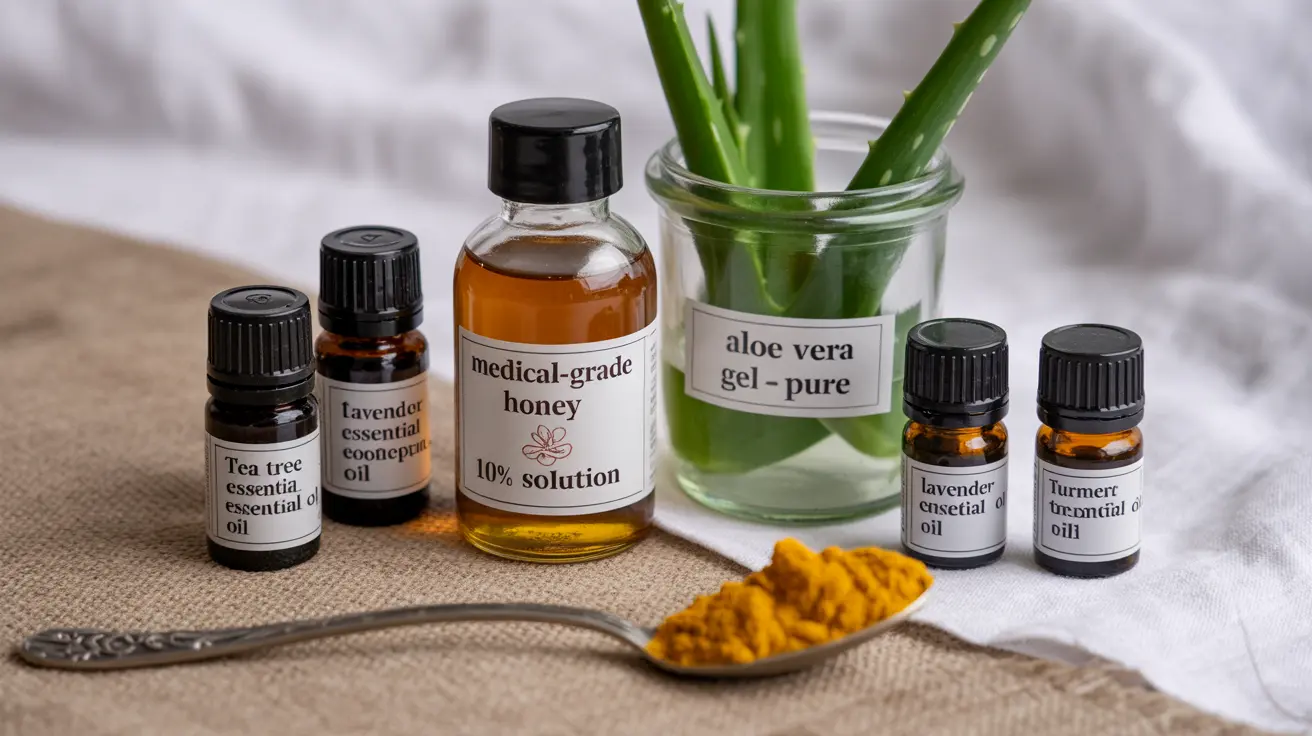When dealing with an infected wound, many people seek natural remedies as complementary treatments to support healing. While medical attention is crucial for serious infections, certain natural approaches can help draw out infection and promote recovery when used appropriately. This guide explores evidence-based natural methods for wound care while emphasizing safety and proper wound management.
Understanding Wound Infections and When to Seek Help
Before attempting any natural treatments, it's essential to recognize the signs of infection and determine whether professional medical care is needed. Common signs of infection include increased redness, warmth, swelling, pus formation, and worsening pain. If you experience fever, spreading redness, or severe pain, seek immediate medical attention.
Proven Natural Remedies for Wound Healing
Honey: Nature's Antibiotic
Medical-grade honey, particularly Manuka honey, has powerful antimicrobial properties that can help draw infection out of wounds. Its high sugar content and natural hydrogen peroxide production create an environment hostile to bacteria while maintaining a moist healing environment. Always use sterile, medical-grade honey rather than food-grade products.
Aloe Vera: Soothing and Healing Properties
Pure aloe vera gel contains compounds that support wound healing and have natural antibacterial properties. It can help reduce inflammation and promote tissue regeneration. Use only pure, pharmaceutical-grade aloe vera products specifically designed for wound care.
Essential Oils for Wound Care
Certain essential oils have demonstrated antimicrobial properties, but they must be used with extreme caution and always properly diluted:
- Tea tree oil (dilute to 1% strength)
- Lavender oil (dilute to 2% strength)
- Oregano oil (dilute to 0.5% strength)
Never apply undiluted essential oils directly to wounds, as this can cause irritation or chemical burns. Always mix with appropriate carrier oils and perform a patch test first.
Traditional Healing Applications
Turmeric Paste
Turmeric contains curcumin, which has natural anti-inflammatory and antimicrobial properties. To create a safe turmeric paste:
- Mix 1 teaspoon turmeric powder with warm water
- Add a small amount of coconut oil
- Apply only to the surrounding skin, not directly in deep wounds
- Cover with a sterile bandage
Warm Salt Water Solution
A warm salt water solution can help draw out infection and cleanse wounds. Use 1/4 teaspoon of salt per cup of warm water, and gently clean the affected area two to three times daily.
Safe Application Methods
When applying any natural remedy:
- Clean hands thoroughly
- Use sterile tools and dressings
- Clean the wound gently with mild soap and water first
- Apply treatments carefully to avoid contamination
- Monitor the wound for signs of worsening infection
Frequently Asked Questions
What are the best natural remedies to draw infection out of a wound and promote healing?
The most effective natural remedies include medical-grade honey, aloe vera gel, and properly diluted tea tree oil. Warm salt water solutions can also help draw out infection, while turmeric paste may help reduce inflammation when applied to surrounding skin.
How can I safely use essential oils like tea tree or lavender oil to treat an infected wound?
Essential oils must always be diluted properly: tea tree oil to 1% and lavender oil to 2% in a carrier oil. Never apply undiluted oils directly to wounds. Perform a patch test first and discontinue use if irritation occurs.
What are the signs that a wound infection requires immediate medical attention rather than home treatment?
Seek immediate medical care if you experience fever, spreading redness, severe pain, deep wounds, or significant pus discharge. Also get help if the infection doesn't improve within 48 hours of home treatment.
How do honey and aloe vera help prevent infection and speed up wound healing?
Medical-grade honey creates an antibacterial environment through its high sugar content and hydrogen peroxide production. Aloe vera contains compounds that reduce inflammation, fight bacteria, and promote tissue regeneration.
Can turmeric paste be effective for infected wounds, and what precautions should I take when using it?
Turmeric paste can help reduce inflammation and fight infection when properly prepared. Apply only to surrounding skin, not directly in deep wounds. Mix with coconut oil for better absorption, and discontinue use if irritation occurs.




